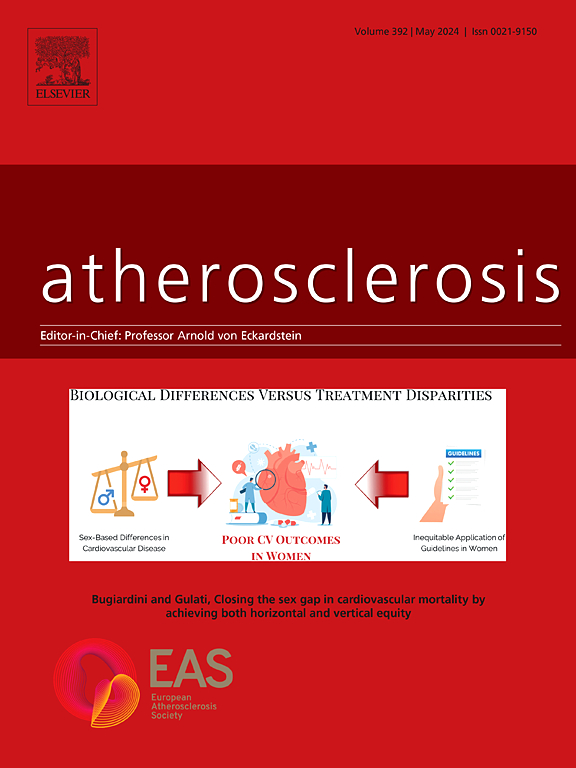Using omics data and genome editing methods to decipher GWAS loci associated with coronary artery disease
IF 4.9
2区 医学
Q1 CARDIAC & CARDIOVASCULAR SYSTEMS
引用次数: 0
Abstract
Coronary artery disease (CAD) is due to atherosclerosis, a pathophysiological process that involves several cell-types and results in the accumulation of lipid-rich plaque that disrupt the normal blood flow through the coronary arteries to the heart. Genome-wide association studies have identified 1000s of genetic variants robustly associated with CAD or its traditional risk factors (e.g. blood pressure, blood lipids, type 2 diabetes, smoking). However, gaining biological insights from these genetic discoveries remain challenging because of linkage disequilibrium and the difficulty to interpret the functions of non-coding regulatory elements in the human genome. In this review, we present different statistical methods (e.g. Mendelian randomization) and molecular datasets (e.g. expression or protein quantitative trait loci) that have helped connect CAD-associated variants with genes, biological pathways, and cell-types or tissues. We emphasize that these various strategies make predictions, which need to be validated in orthologous systems. We discuss specific examples where the integration of omics data with GWAS results has prioritized causal CAD variants and genes. Finally, we review how targeted and genome-wide genome editing experiments using the CRISPR/Cas9 toolbox have been used to characterize new CAD genes in human cells. Researchers now have the statistical and bioinformatic methods, the molecular datasets, and the experimental tools to dissect comprehensively the loci that contribute to CAD risk in humans.

求助全文
约1分钟内获得全文
求助全文
来源期刊

Atherosclerosis
医学-外周血管病
CiteScore
9.80
自引率
3.80%
发文量
1269
审稿时长
36 days
期刊介绍:
Atherosclerosis has an open access mirror journal Atherosclerosis: X, sharing the same aims and scope, editorial team, submission system and rigorous peer review.
Atherosclerosis brings together, from all sources, papers concerned with investigation on atherosclerosis, its risk factors and clinical manifestations. Atherosclerosis covers basic and translational, clinical and population research approaches to arterial and vascular biology and disease, as well as their risk factors including: disturbances of lipid and lipoprotein metabolism, diabetes and hypertension, thrombosis, and inflammation. The Editors are interested in original or review papers dealing with the pathogenesis, environmental, genetic and epigenetic basis, diagnosis or treatment of atherosclerosis and related diseases as well as their risk factors.
 求助内容:
求助内容: 应助结果提醒方式:
应助结果提醒方式:


